How To Plant Corn In A Small Garden

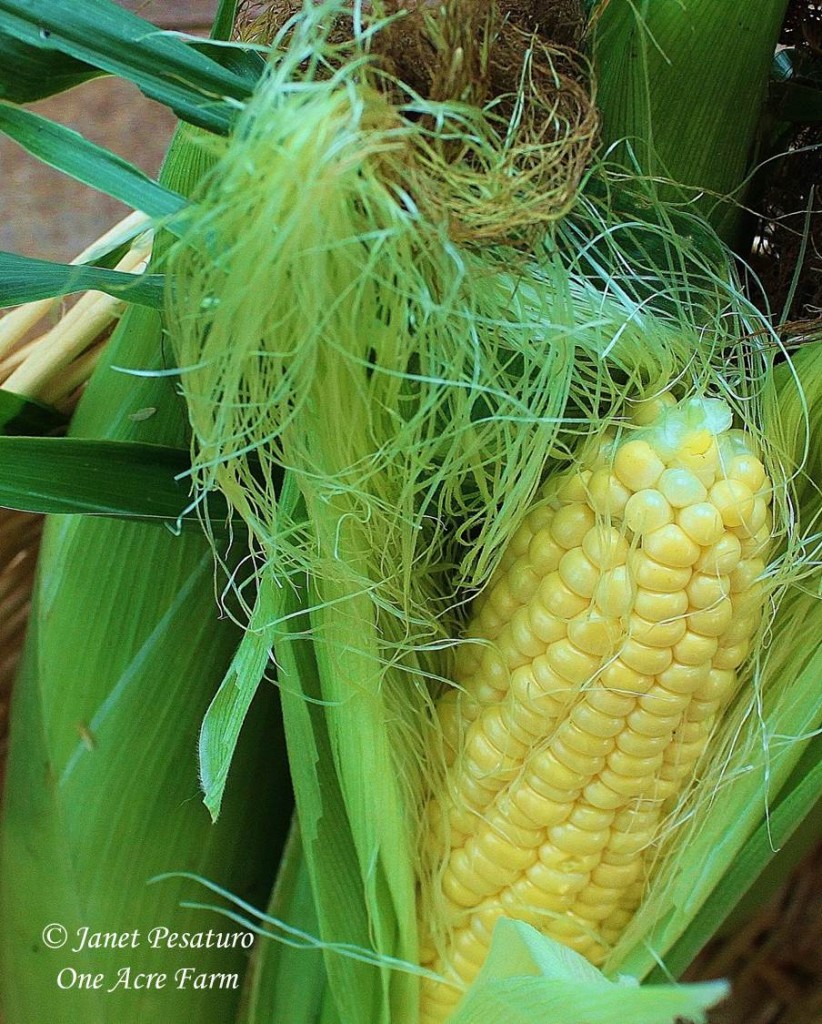
6 Tips for Growing Corn in Small Spaces. You, too, can grow full, plump ears of corn like this one.
There's nothing like an ear of sweet corn, picked fresh from your own garden just moments ago. And you can absolutely succeed with corn in the backyard, if you consider these 6 tips:
- Choose an appropriate variety
- Proper planning and site conditions
- Understand corn pollination
- Plant in blocks
- Hand pollinate
- Protect from suburban wildlife
6 Tips for Growing Corn in Small Spaces
1. Choose an appropriate variety
Selective breeding has made several different types of sweet corn available to the home gardener. The wikipedia entry has a great table summarizing them. The one important thing for people with gardening neighbors to keep in mind, is that "super sweet" corn (bred to maintain its incredible sweetness and texture for weeks) will be ruined if it is cross pollinated with other types of corn. The kernels will be tough and starchy. So grow it at least 25 feet away from other types of corn, or time your planting so that it will tassel at least 10 days before or 10 days after other corn planted nearby.
2. Proper planning and site conditions
All of the same rules for growing corn on large scale apply to a small backyard patch.
- Full sun exposure (the more, the better)
- Good, rich garden soil with plenty of compost and adequate moisture
- Warm soil temperature (at least 65 degrees F) before sowing seeds, because germination is poor in cool soil. Here in MA, a good rule of thumb is 1-2 weekend after Memorial Day weekend.
- Awareness of garden pests and a plan for management
3. Understand corn pollination
Each kernel on an ear of corn corresponds to one thread of "silk", the female reproductive organ. The kernel does not develop unless its corresponding thread of silk is pollinated. A poorly pollinated ear of corn will be small, with a lot of space between the kernels.
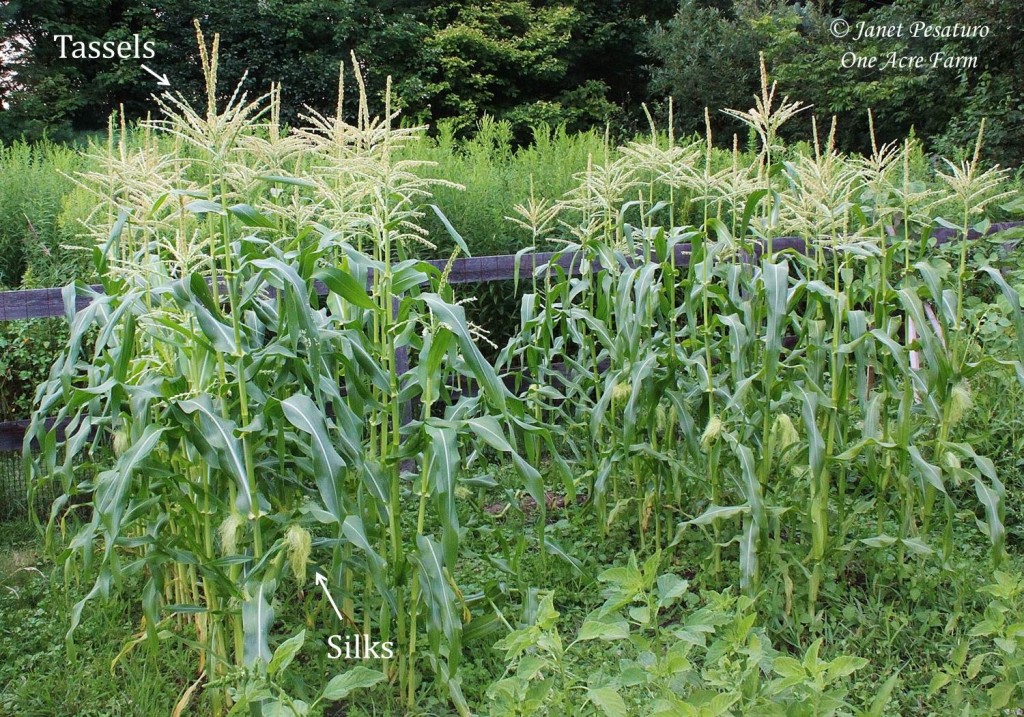
6 Tips for Growing Corn in Small Spaces. Block planting, as in this photo, illustrates one of these tips.
For the kernel to be pollinated, pollen grains from the anthers (those little rice like things attached to the tassels) must make contact with the silk. This happens naturally when wind blows anthers and pollen dust into the silks. Thus, we say that corn is pollinated by wind rather than insects.
4. Plant in blocks
Because it is pollinated by wind, a corn plant needs to be close to other corn plants to be fully pollinated. A corn plant that is surrounded by many other corn plants, is likely to be successfully pollinated, because pollen can come at it from all directions. So here's the take home point:
- A single long row of corn is a poor configuration.
- A big circle or square (block planting) is best. The photo above is an example of how we do it: Four 10-foot long rows, spaced 2-3 feet apart, with about 10-15 plants in each row. It's basically a 10 x 10 ft square patch.
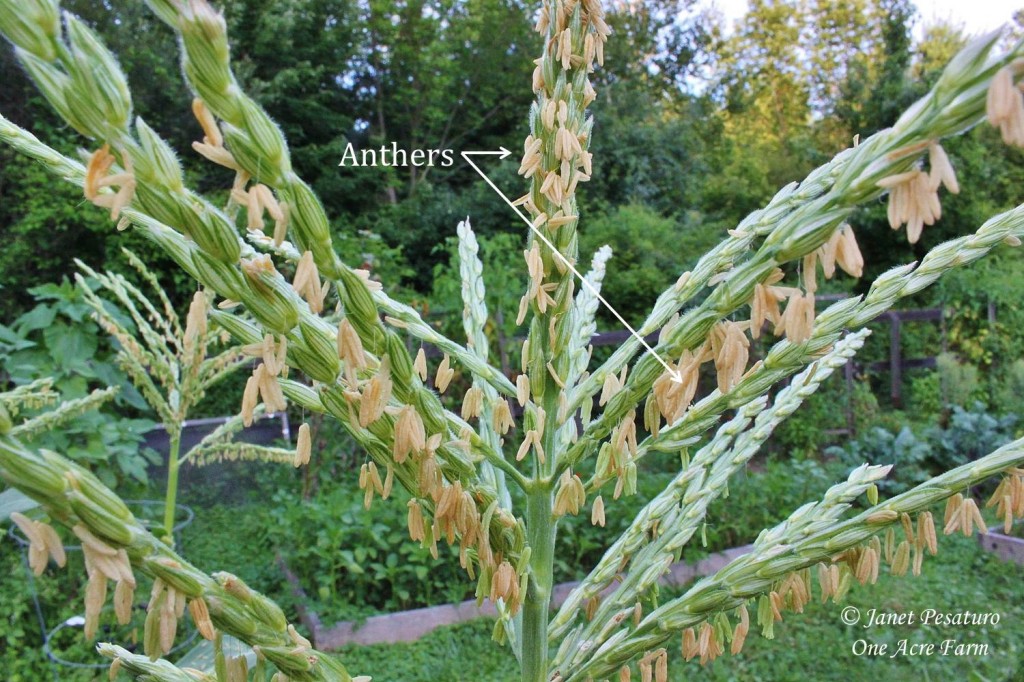
6 Tips for Growing Corn in Small Spaces. It's important to understand corn pollination. This is a photo of the tassels of one corn plant, with anthers labelled. Anthers produce the pollen grains.
5. Hand pollinate
Block planting helps, but if your block is really small, pollination will not be optimal, because there just isn't a lot of pollen around to reach the silks. So don't depend entirely on the wind. Hand pollinate.
How to hand pollinate
This is the easiest of garden tasks. Don't make it any more complicated than it has to be. The first source I consulted on hand pollinating corn advised collecting the anthers in a paper bag, and then carefully sprinkling them on the silks. Even more complicated, another one said to cut off the tassels and use a paint brush to pick up the pollen from the tassels and apply it to the silks.
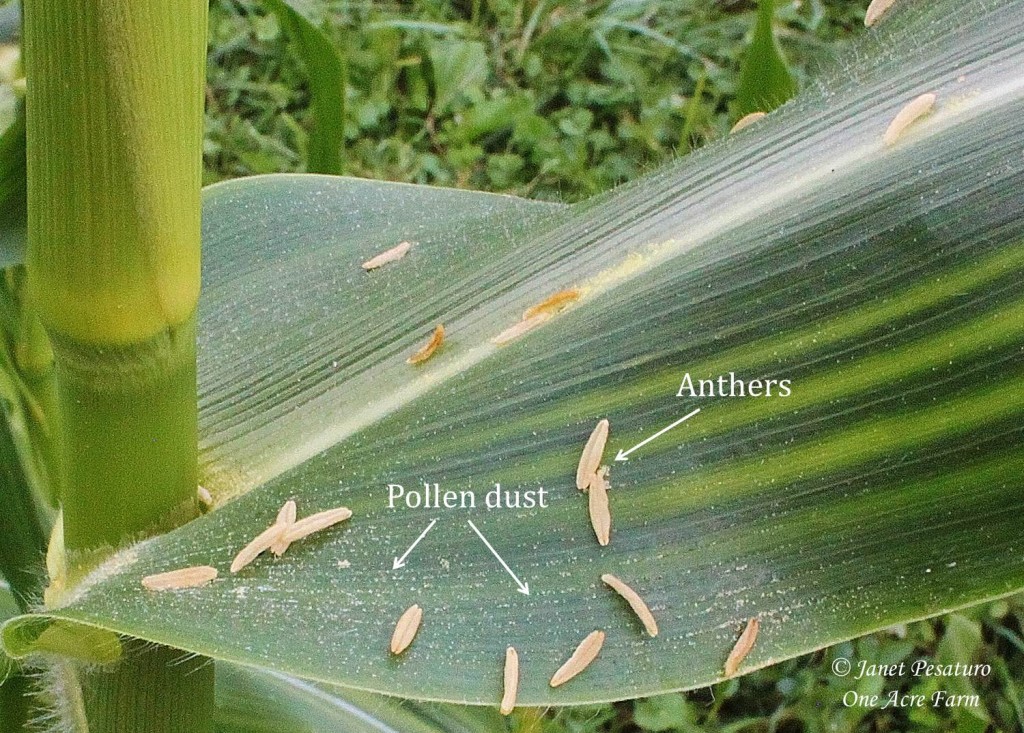
6 Tips for Growing Corn in Small Spaces. Understanding corn pollination is part of it. This photo shows the anthers and pollen grains.
Totally unnecessary. No need to make a production out of this. If I had to remember to bring a paper bag or clippers and paint brush out to the garden, I would never get around to hand pollinating. All you really need for this simple task is your hand and your brain. Here's what to do:
- Run your fingers along the length of a tassel, allowing anthers and pollen grains (yellowish dust) to fall into the palm of your hand.
- Sprinkle the anthers and dust onto the silks of an ear of corn on a different plant (corn is not self-fertile, which means it must be cross pollinated).
- Pollen can be placed anywhere along the length of the silk for pollination to occur.
- Even easier is to simply shake the stalks so that the pollen falls from the anthers and down to the silks. However, the success of this is still somewhat dependent on the wind, so if you've remembered to take both your hand and your brain out to the garden, use the method above. It's just as easy.
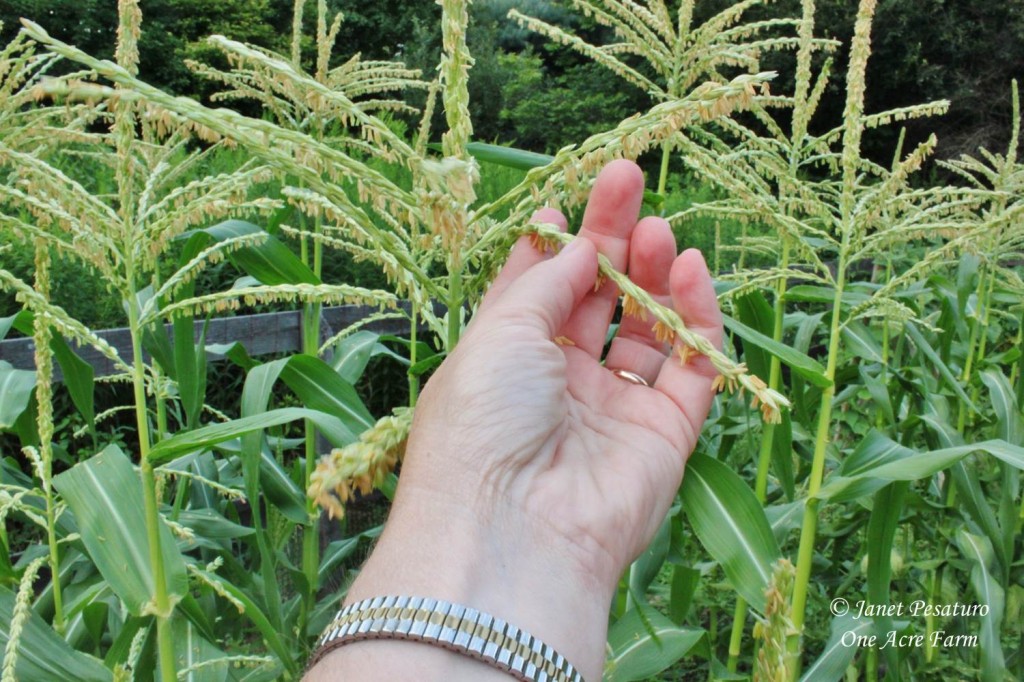
6 Tips for Growing Corn in Small Spaces. Hand pollinating is easy, and helps develop ears of corn full of plump kernels.
When to hand pollinate
Tassels and silks emerge from an ear of corn at around the same time. The tassels shed most of their pollen within about a week of emergence of the anthers, and silks are receptive to germination for about a week after they emerge.
- Hand pollinate once a day for about a week after emergence of anthers and silks. The silks begin to turn brown after pollination, so you will know when to stop.
- Do it only during dry weather, because anthers do not shed pollen when wet.
- Time of day does not matter much, as long as you don't do it when the corn is wet, or just before it rains.
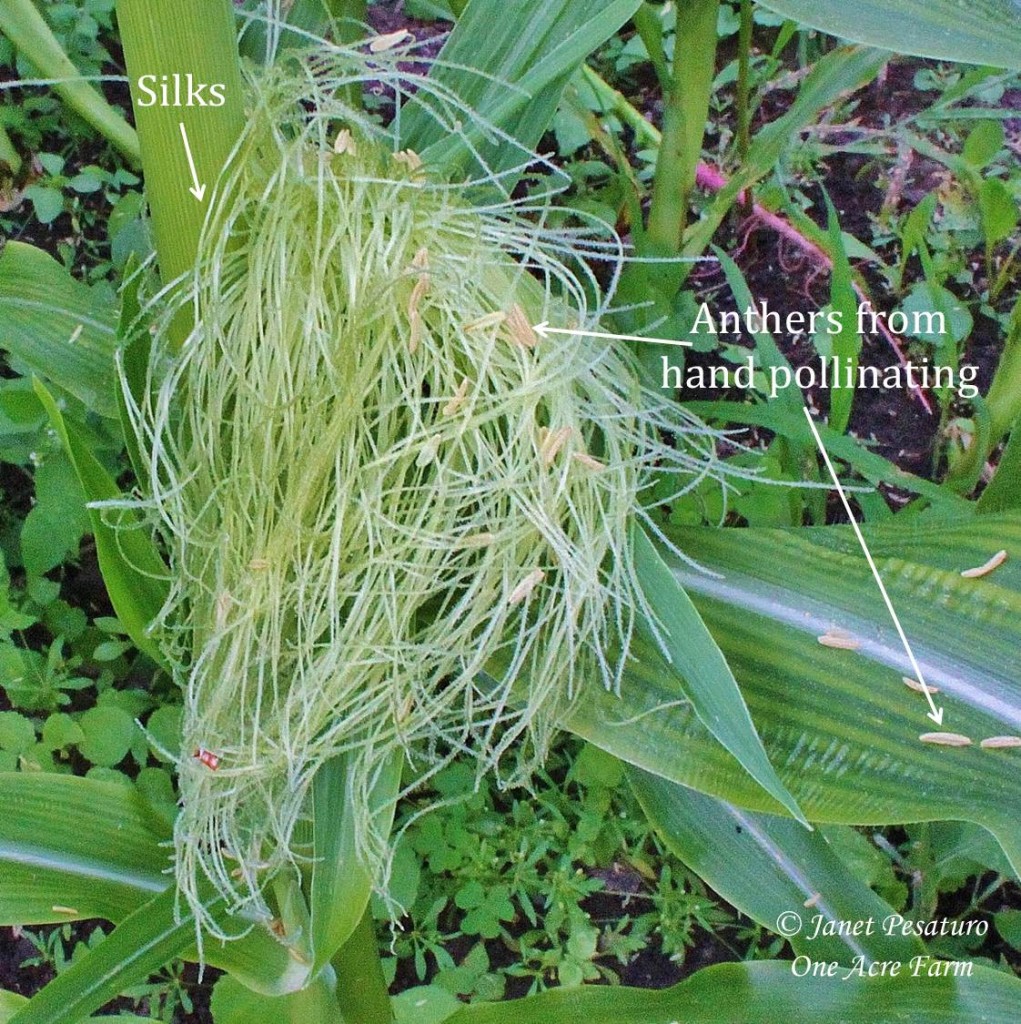
6 Tips for Growing Corn in Small Spaces. Hand pollinating is one important tip. This photo shows the silks with anthers after hand pollinating.
Which plants to hand pollinate
It's most important to hand pollinate the corn that's growing around the periphery of your block. That is because they are not exposed to pollen from all directions. So if you don't have time to do them all, just focus on the ones at the edges.
6. Protect from wildlife
Consider protecting your corn patch with an electric fence, because humans are not the only animals that like sweet corn.
- Bears love it, and can cause great damage, but don't usually live in the denser suburbs.
- Coyotes might pull down a few stalks to munch on developing ears, but usually do not do a lot of damage.
- Raccoons are the biggest threat to corn in suburban areas. They sometimes come in family groups and pull down a lot of stalks.
We have plenty of raccoons here, but they devastated our little patch only once or twice in our 15+ years of growing corn. We just chalked it up to the cost (among many benefits) of sharing the land with wildlife, and did nothing about it. If it happens again, we'll go for that electronetting.
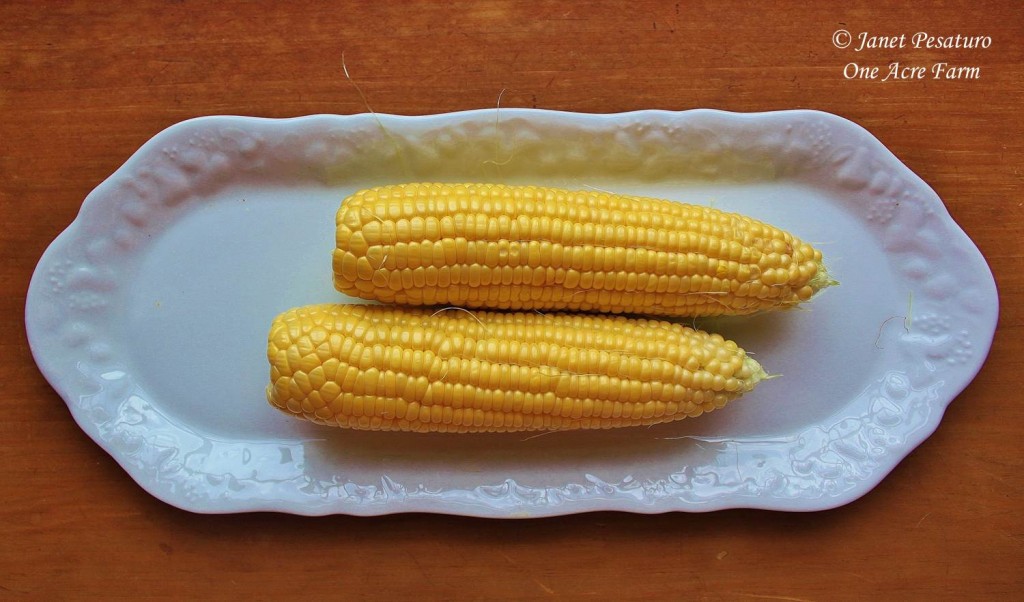
6 Tips for Growing Corn in Small Spaces. Using these tips, most of our corn looks just like these two ears: Full of sweet, plump kernels!
Sources:
- Sex in the Corn Field, by Dr. R. L. Nielsen
- Sweet Corn Genotypes
Shared on: Farmgirl Friday #160, Simply Natural Saturday, Heritage Homesteaders Hop #15, Wonderful Wednesday Blog Hop #82, Homestead Barn Hop #169
How To Plant Corn In A Small Garden
Source: https://ouroneacrefarm.com/2014/06/06/growing-corn-small-spaces-six-tips/
Posted by: miercirmly1939.blogspot.com

0 Response to "How To Plant Corn In A Small Garden"
Post a Comment